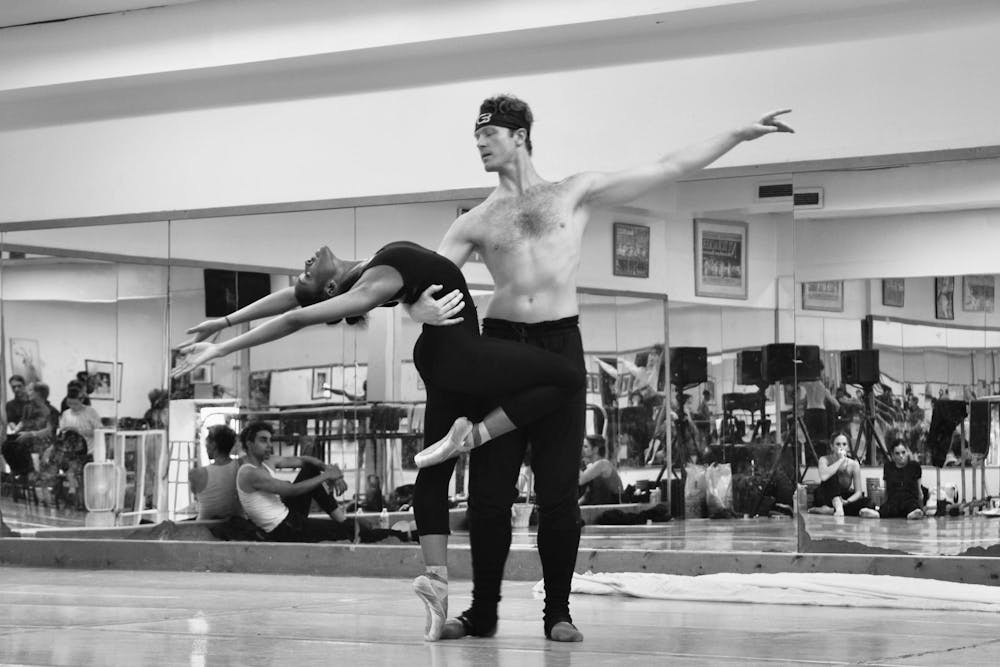The South Carolina Ballet will tell the tale of love and unity through creative choreography and vibrant costumes with "Off the Wall & Onto the Stage: Dancing the Art of Jonathan Green" on Sept. 27.
William Starrett, CEO and artistic director of the South Carolina Ballet, created "Off the Wall & Onto the Stage" in 2005 to highlight Gullah culture as portrayed in South Carolina artist Jonathan Green's paintings. Over the past 19 years, the ballet has been performed across the United States according to the South Carolina Ballet website.
Green works to illustrate the history of Gullah culture and the Lowcountry landscape of South Carolina, including its involvement in slavery, in his paintings according to the South Carolina Ballet website.
Slavery played a major role in the massive rice production that occurred in South Carolina's Lowcountry. Rice represents a significant portion of Gullah culture, which they labeled the "rice culture," said Starrett.
"Jonathan was a child in the 70s, and so ... his paintings depict his childhood memory," Starrett said. "Things are bigger than life because he was a little guy. And so those are all seen in the paintings."
The ballet brings 22 Jonathan Green paintings to life through live singers, colorful costumes and unique choreography. The paintings have encouraged the dance to evolve into showcasing the journey to unity, Starrett said.
“It was just the paintings that spoke to me, that I saw the movement and that I would ask him about the paintings, and then the stories behind the paintings really intrigued me,” Starrett said.
The ballet's main focus is on the vivid colors used in Jonathan Green's paintings to create the costumes, as well as the stories that every outfit tell.The ballet's costumes, music and choreography represent traditional Gullah culture according to the South Carolina Ballet website.
“Often we do this during Black History Month, and it is something positive that has come from the horrible history of slavery,” Starrett said.
The ballet conveys messages of hope and family, both of which are intertwined into the Gullah community's history according to the South Carolina Ballet website. These concepts are used to drive the dancers as they learn the paintings' stories, Starrett said.
Ballet master Maurice Johnson said he believes it is critical to preserve South Carolina culture. Part of this entails seeing the community and finding love in it, regardless of its good or bad aspects said Johnson.
“We keep that alive so ... it is nice that this ballet is something that we can offer to other people the beauty of South Carolina and all the beautiful things that we have here in our history,” Johnson said.
A backdrop showcasing a painting by Jonathan Green will open each scene, lifting to reveal the dancers dressed as the paintings show. Costume designer and head of the wardrobe department Abby McDowell said the outfits and props are "magical."
“People who have never seen a ballet before could really enjoy the magic of that just as much as people who love ballet,” McDowell said.
McDowell has worked on the ballet's wardrobe for the previous three seasons. She said one of the wardrobe's most important features is its timeless quality. There are over 150 hand-sewn costumes, which is where McDowell found the most inspiration.
“At times they're in jeans over a skirt and then the hats are a huge part of the culture,“ McDowell said. “And that is something that is kind of old fashioned but still exists today within a church culture, is wearing hats.”
There is an introductory poem and a paragraph in the program that provides background information for those who are unfamiliar with the Gullah culture represented in the ballet. The dancers can convey many messages and interpretations of the paintings, revealing fresh cultural meanings with each performance, Starrett said.
“I think what’s wonderful is that through dance, you can take your own journey,” Starrett said.

Starrett said this is a one-of-a-kind story because few local ballet companies produce such an essential and personal ballet on local cultures. He said he hopes this story will be told for many more years to come.
“We can control how we view it today, and try to do what’s right. This is my way of showing how we need to come together and learn from our past,” Starrett said. “The ballet really evokes (a) sort of unity and how we need to embrace one another and celebrate our differences because they bring us together.”
"Off the Wall & Onto the Stage: Dancing the Art of Jonathan Green" will take place on Sept. 27 at 7:30 p.m. at Township Auditorium. Tickets are available through the South Carolina Ballet website and at the auditorium's box office.

